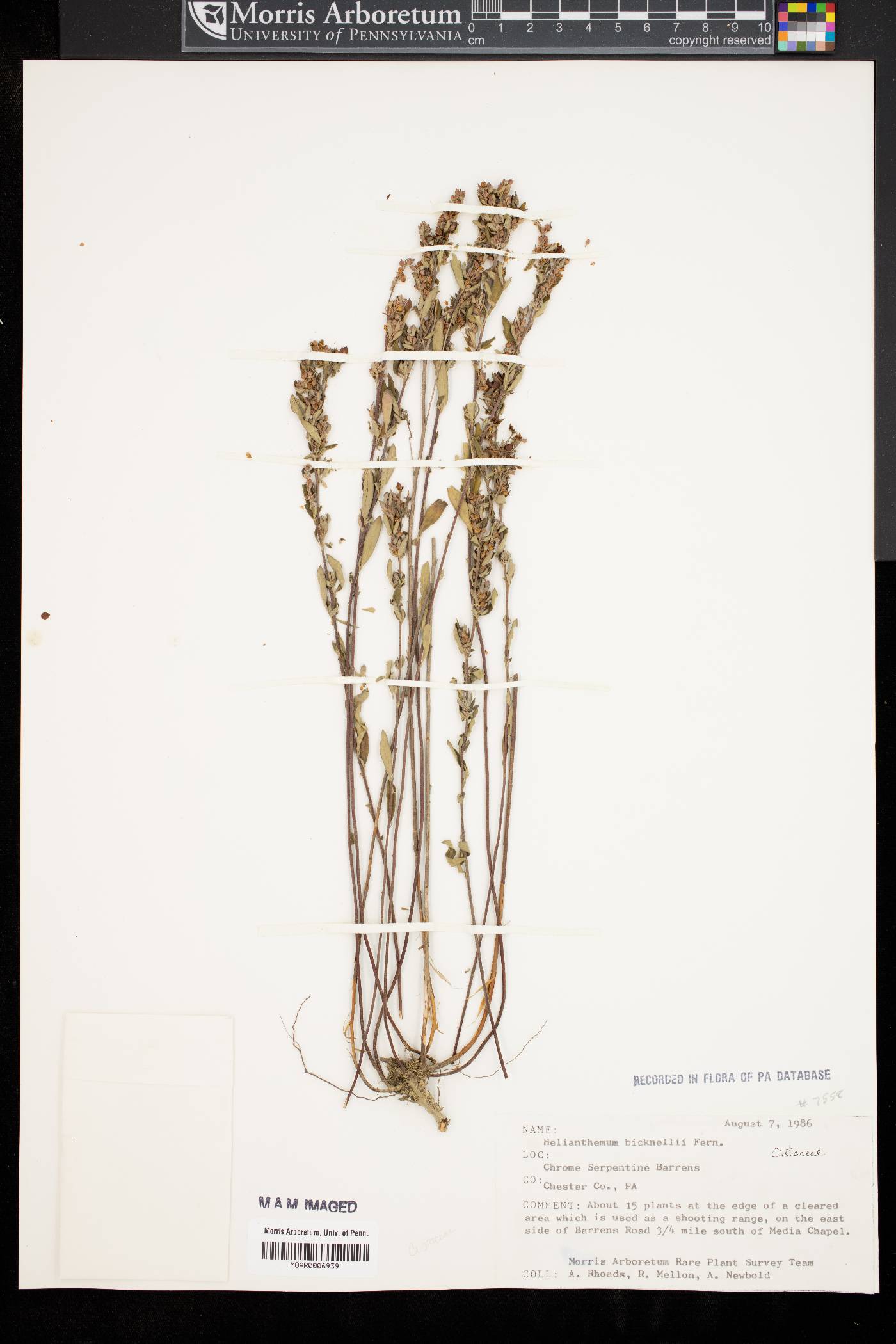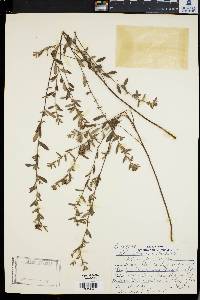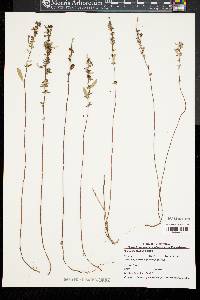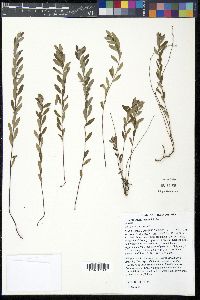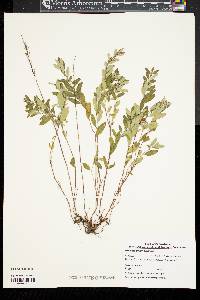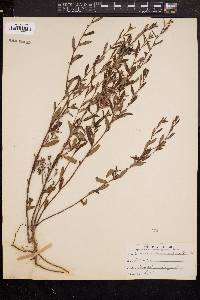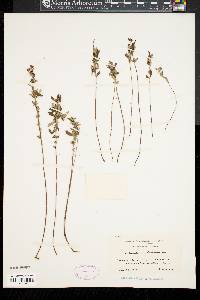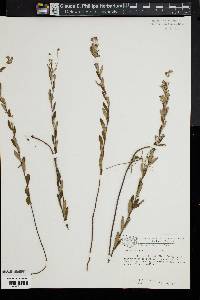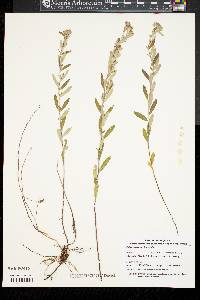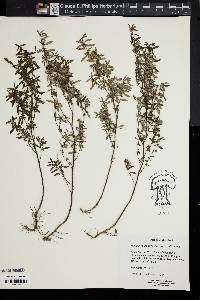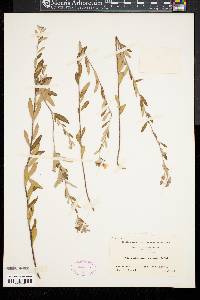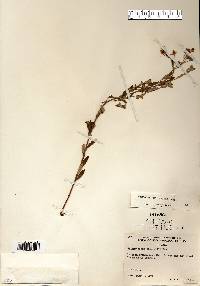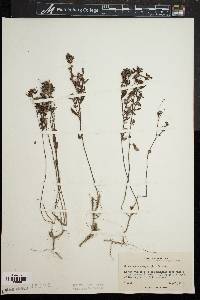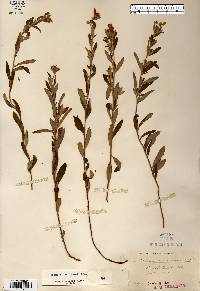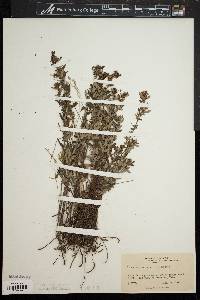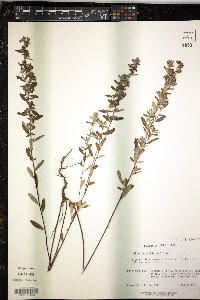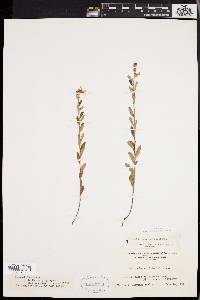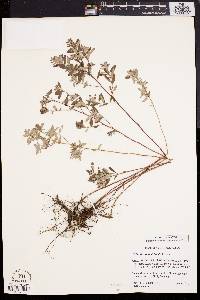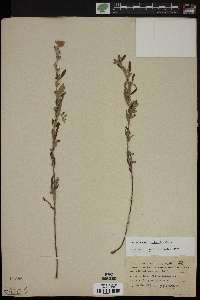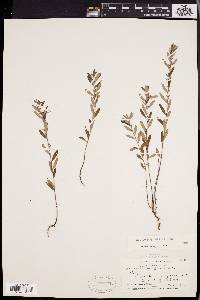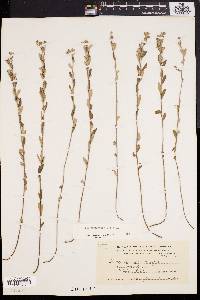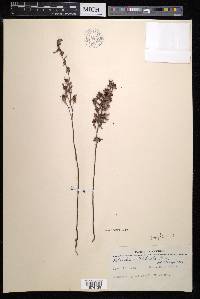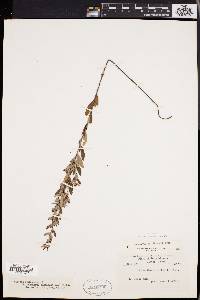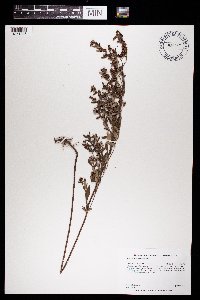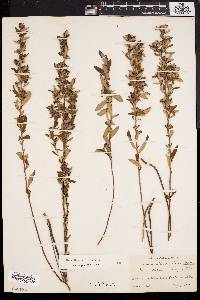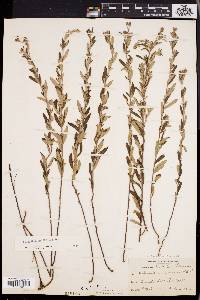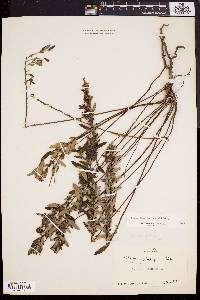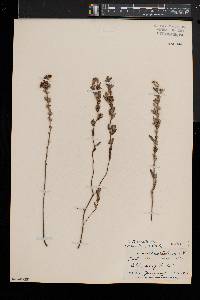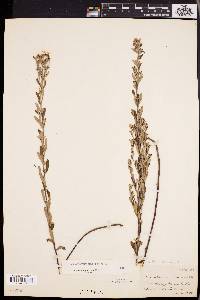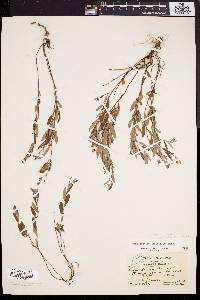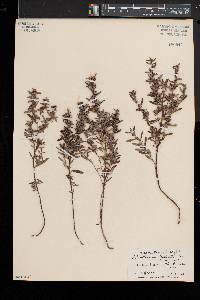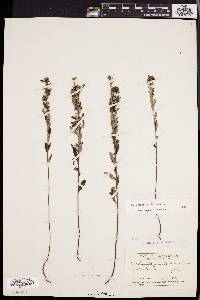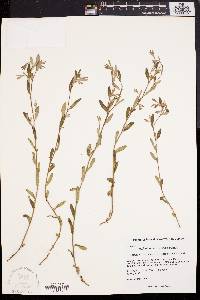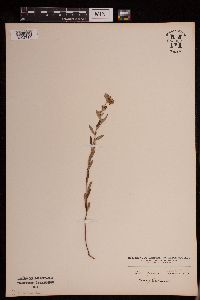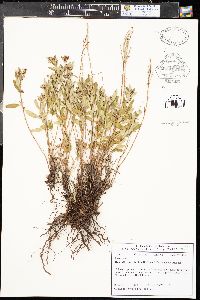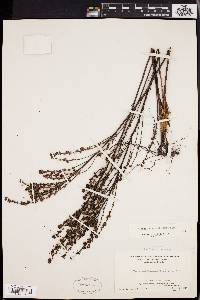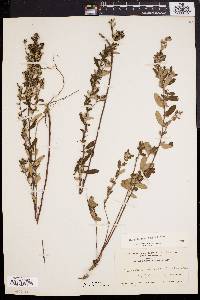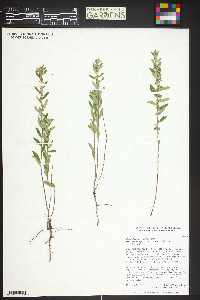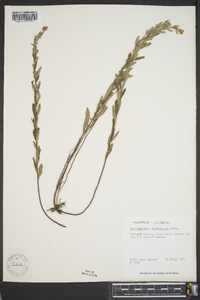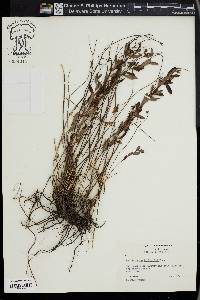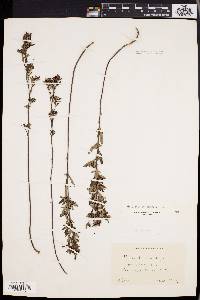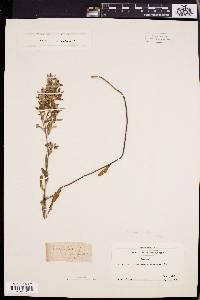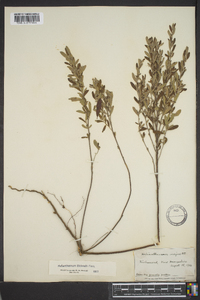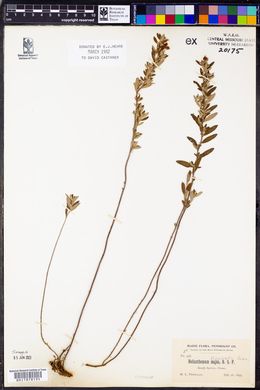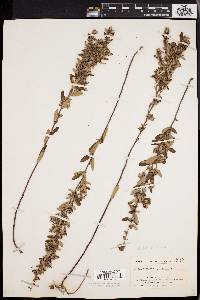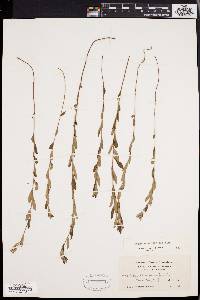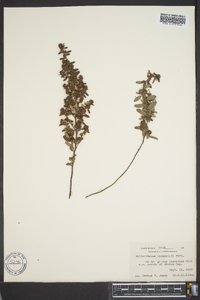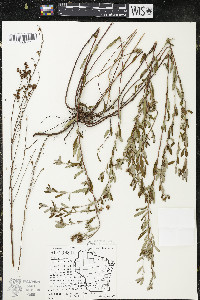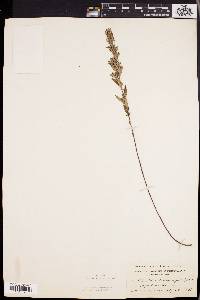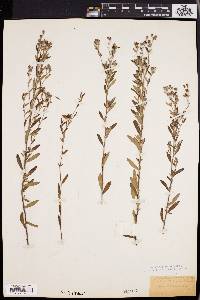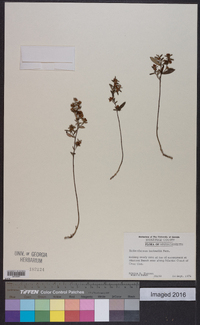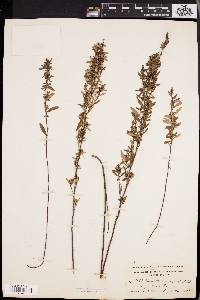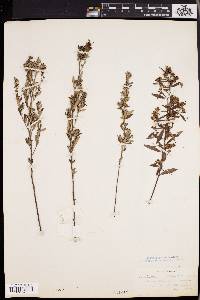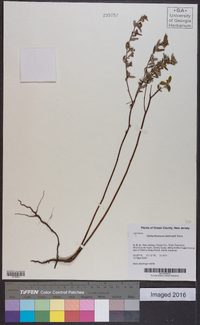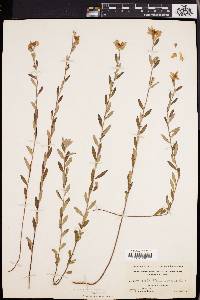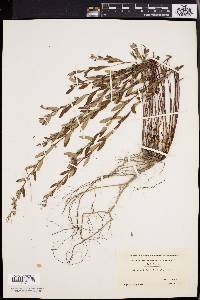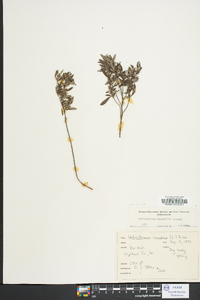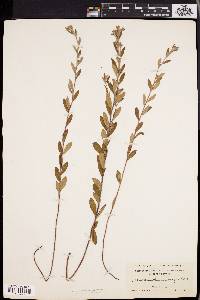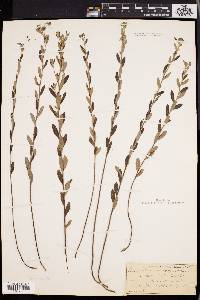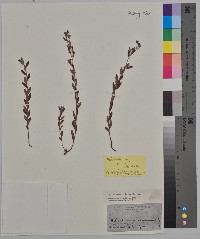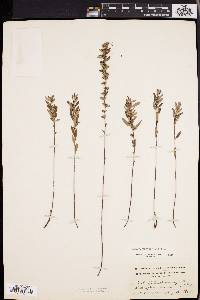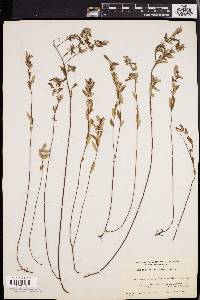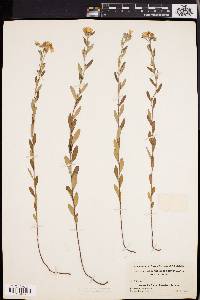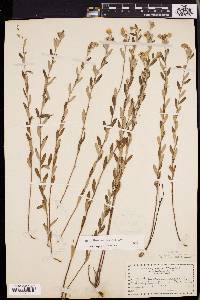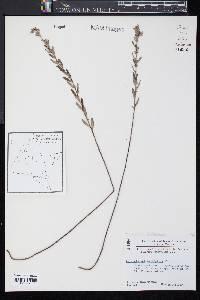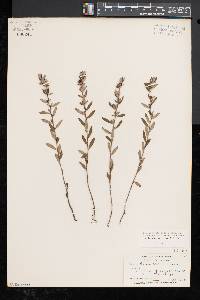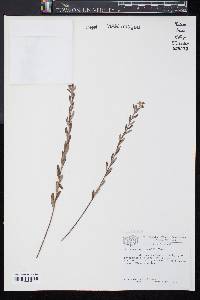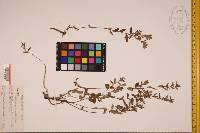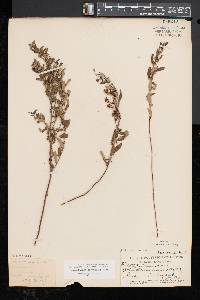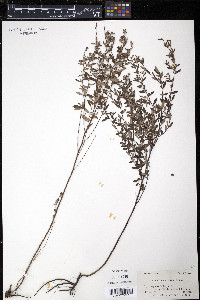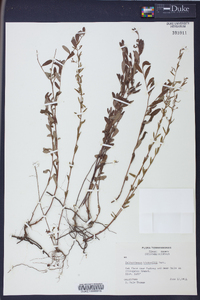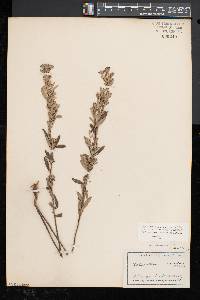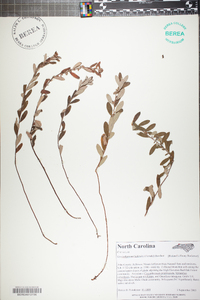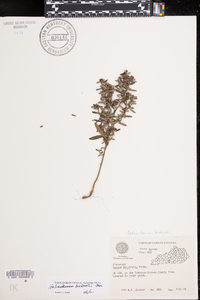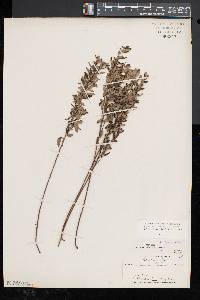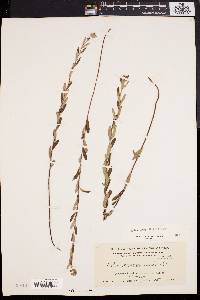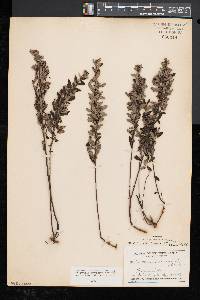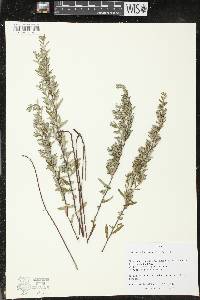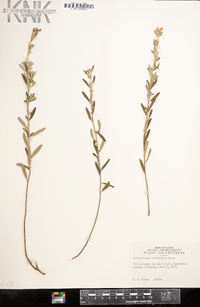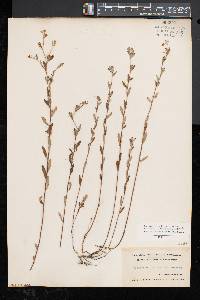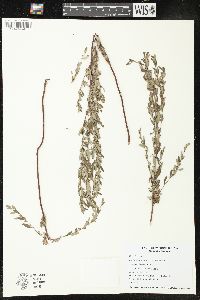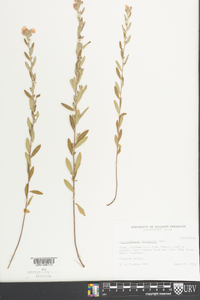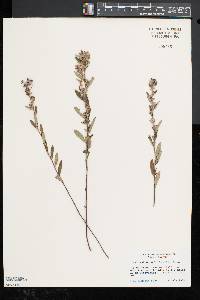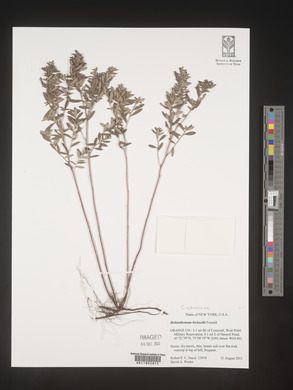Helianthemum bicknellii
|
|
|
|
Family: Cistaceae
hoary frostweed
|
Perennial herb 20 - 60 cm tall Leaves: alternate, stalkless, non-toothed, 2 - 3 cm long, linear-oblong to narrowly elliptic with wedge-shaped base, and densely covered (at least on underside) with matted, grayish, branched or forked, star-shaped hairs. Flowers: of two kinds: two to ten, terminal, stalked, early, yellow, petal-bearing, showy, 2 - 2.5 cm broad, open, radially symmetric flowers; and then later, tight clusters of non-opening (cleistogamous) flowers arranged in leaf axils of numerous, erect to tightly ascending, shorter branches. Sepals: five, in two series, outer two narrower than inner three, all about same length (5 - 7 mm), and covered with branched, star-shaped hairs. In the non-opening (cleistogamous) flowers the outer two sepals have an evident, 0.5 - 1.6 mm long, linear tip. Petals: five, yellow, spreading, 0.8 - 1.2 cm long, rounded to inversely egg-shaped, with rounded tips. The cleistogamous flowers do not have any petals. Stamens: ten to fifty (or more) in petal-bearing flowers, but only three to eight in cleistogamous flowers. Pistil: with one, single-chambered, superior ovary; and one, very short (up to 1 mm) style terminated by one rounded stigma. Fruit: short-stalked, hairless, single-chambered, broadly egg-shaped capsules which open from top to bottom and are enclosed by persistent sepals. The capsule size and number of seeds differ between the two types of flowers with those from the open petal-bearing flowers tending to be 3.5 - 5 mm tall and contain twelve to twenty-six seeds, but the cleistogamous flowers produce smaller capsules (1.5 - 2 mm tall) with only one to two (sometimes three) seeds. Stems: numerous, clustered, erect, mostly unbranched as first flowers open, but later with numerous erect or appressed branches. Seeds: rounded, with wrinkled and veiny surface (at 20x magnification). Similar species: Helianthemum bicknellii is very similar to H. canadense, except that species has some 1 mm long unbranched hairs mixed with the branched hairs on the upper surface of the main stem leaves and sepals of the petal-bearing flowers; the open, petal-bearing flowers are single at the top of the the stem, but as later branches arise the single flower is usually overtopped by the leafy branches with axillary clusters of cleistogamous flowers; the capsules from the cleistogamous flowers are at least 2 mm tall and contain five to ten pimpled or warty seeds; and the plant blooms about two to three weeks earlier. Another species to the east and southeast, H. propinquum, is quite similar however, its stems are scattered on a creeping rhizome, the leaves are very narrowed at the base, and it blooms earlier (early June). Species of Lechea are somewhat similar, but they have three, reddish petals that are normally concealed by the sepals, and the leaves are either hairless or only have unbranched hairs. Flowering: June to July Habitat and ecology: Not very common, localized to open, sandy, dry soils such as sandy black oak savannas, sand prairies or hill prairies. Occurence in the Chicago region: native Notes: The large, early, petal-bearing flowers of this species open only a single time, in the full sun, and then the petals drop by the next day. Author: The Field Museum Stems ±clustered on a loosely branched caudex, mostly 2-5 dm, at first anthesis simple or nearly so and with a terminal infl of (2-)6-10(-18) open, petaliferous fls, later with numerous erect or appressed branches and branchlets bearing axillary glomerules of cleistogamous fls, but these later branches not much if at all overtopping the main axis; lvs linear-oblong to narrowly elliptic, cuneate at base, stellate-pubescent (more densely so beneath), without longer hairs, those of the main axis 2-3 cm, the others smaller; cal of open fls 5-7 mm, stellate-pubescent, without longer hairs, the outer sep nearly as long as the inner; pet 8-12 mm; outer sep of cleistogamous fls with an evident, linear free tip 0.5-1+ mm, fr of open fls 3.5-5 mm, with 12-26 seeds, of cleistogamous fls 1.5-2 mm, with 1-2(3) seeds; seeds indistinctly reticulate. Dry, usually sandy soil; Me. to Minn. and s. Man., s. to n. Ga., Ark., and Colo. June-July, 2-3 weeks later than no. 1 [Helianthemum canadense (L.) Michx.]. (H. majus and Crocanthemum majus, misapplied; C. bicknellii) Gleason, Henry A. & Cronquist, Arthur J. 1991. Manual of vascular plants of northeastern United States and adjacent Canada. lxxv + 910 pp. ©The New York Botanical Garden. All rights reserved. Used by permission. |

